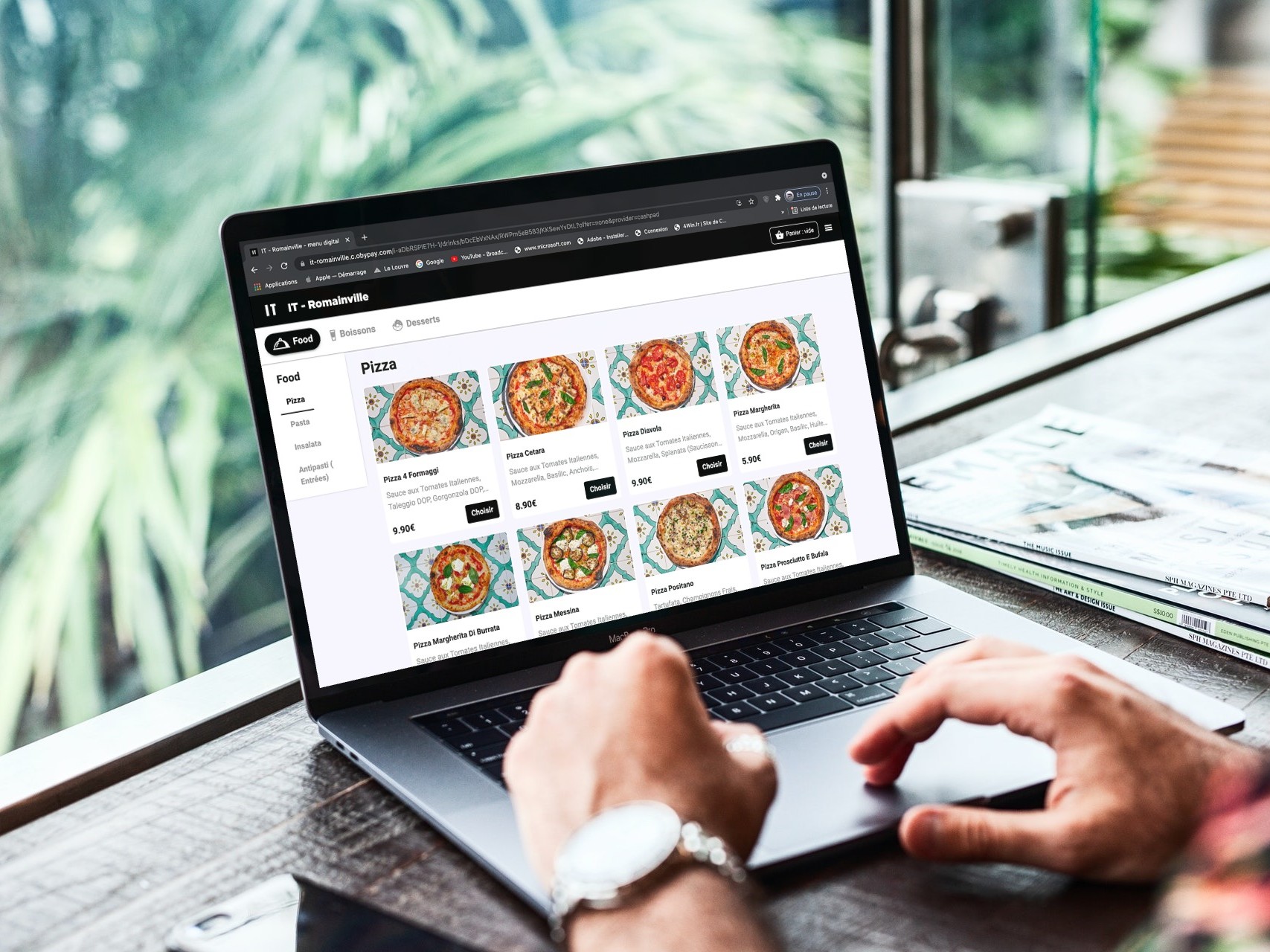Digitization and sustainability in the foodservice industry: enemies or allies?
July 21, 2025
Is digitizing your restaurant compatible with an eco-responsible approach?
It's a question that more and more professionals are asking themselves. And with good reason: between energy consumption, multiplication of equipment and the environmental impact of servers, tech is raising legitimate doubts.
It allows you to :
✔ better control flows and adapt production to actual needs
✔ limit waste, both in the dining room and in the kitchen
✔ reduce single-use consumables
✔ simplify product traceability and tracking
✔ add value to your CSR commitments
And above all, it does so without weighing down your processes or complicating your day-to-day management.
In this article, we take stock: what digitalization can be criticized for (and rightly so), and what it can achieve in concrete terms when it's thought of as a tool to serve your priorities, not as an end in itself.
What people criticize (rightly or wrongly) about digitalization
Digitization has its advantages, but it also has its blind spots. And in a context where many establishments are committed to sustainability issues, these issues deserve close attention.
First point: the equipment
Kiosks, tablets, screens, servers... These are physical pieces of equipment, requiring resources to manufacture, transport and install. Their impact exists, especially if equipment is replaced too often or if it is not recycled at the end of its life.
Want to find out more? Check out our resource ➜ Control terminals: 5 mistakes to avoid when buying refurbished equipment
Second topic: energy consumption
A control screen or tablet doesn't consume much power on its own. But once the whole ecosystem is in place (equipment on the cash side, kitchen, room, cloud, hosting, data synchronization) the energy bill can climb.
The whole thing runs continuously, sometimes without standby or optimized management. And what weighs most is often invisible: the servers running in the background.
This is a real point of vigilance, which also depends on the technical choices made by service providers.
A final point: the logic of renewal
Digitization can also generate a form of over-equipment. Tools that overlap, hardware that duplicates itself, little-used interfaces that remain connected... In some cases, the hardware is still functional, but is being changed due to a lack of updates or support. It's not inevitable, but it's a reality you need to take into account when making decisions.
Want to find out more? Check out our resource ➜ Why be wary of low-cost control terminals?
These issues do not call into question the value of digital tools. Above all, they remind us that the subject is not "for or against" tech, but "how to choose and use it better".
What digital technology can do for a more sustainable approach
Digitalization is often associated with performance or customer experience.t.
But in terms of environmental impact, it can also bring about changes in usage, by acting on what really weighs down our daily lives: waste, resources and transparency.
Optimize flows and avoid waste
Inventory and production management remains one of the most sensitive areas when it comes to environmental impact. To produce too much is to waste. To produce too little is to throw away. Digital technology makes it possible to make finer adjustments.
With the right tools, you can analyze sales volumes by day, by schedule, by channel, and adapt your production accordingly. Solutions connected to the cash register or kiosk give you a clear picture of which dishes are going out and which are stagnating.
With a view to :
✔ fairer procurement
✔ less surplus
✔ fewer losses
When it comes to in-store wastage, certain solutions can be used to create alerts for products close to expiry, or to provide real-time anti-waste offers. You avoid throwing away dishes that can still be eaten, while boosting your fill rate at off-peak times.
Reduce single-use consumables
Every menu printed, every ticket thrown away, every loyalty card forgotten in a drawer represents a cost. Ecological, but also logistical and financial. By digitizing these media, you reduce the volumes consumed and gain in responsiveness.
A menu accessible by QR code allows you to modify a recipe or price in real time, without reprinting. A payment made at table on your phone saves miles of paper rolls. And a loyalty program integrated directly into the customer's Wallet eliminates the need for plastic cards while allowing you to track usage data.
The benefits are twofold: fewer resources consumed and a more direct channel of communication with your customers.
Want to find out more? Check out our resource ➜ Digital loyalty program: the ecological alternative to paper cards
Making the invisible visible
Today, many establishments want to promote their sourcing, their local approach and their commitments. But this isn't always easy to do in the dining room, on a slate or paper menu.
With a well-thought-out digital journey, you can display useful information at the right time: origin of ingredients, precise composition of dishes, allergens, etc. You provide context without weighing down the experience.
And on the management side, certain tools offer a finer vision of what works and what doesn't, over time. There's no need to go digging through your receipts to figure out what needs to be changed. You gain in legibility, without complicating your daily routine.
Want to find out more? Check out our resource ➜ Allergens, special diets, ethics: how can you make the most of your commitments in the customer journey?

Make digital an ally of your CSR approach
Digitization and sustainable development are not mutually exclusive. It all depends on the choices you make, and how you use them.
If you're wondering about the impact of your current tools, or want to take your CSR strategy a step further, we can help.
Our team is available to discuss about your challenges, your constraints and what you concretely expect from digital.
See also our partners: complementary solutions that share our commitments.












